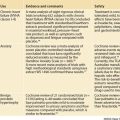chapter 11 Connectedness: the role of social support
SOCIAL ISOLATION AND STRESS
Social isolation is painful, so much so that it figures prominently among the top 10 stressors in the Holmes and Rahe scale.1 Top among stressors is the grief associated with the loss of a family member. Next come a range of issues related to marriage and workplace stress. Conflict at work is also among the most stressful events in most people’s lives. Most of us will wish, at various times, to shun social connection, but the pain associated with feeling socially isolated indicates that the need for connection is part of human nature. As such, it is expressed in many ways, including physical illness, anxiety, depression, low productivity, substance abuse and domestic violence.
SOCIAL ISOLATION AND ILLNESS
Social isolation, being a considerable stressor, has a significant impact upon our emotional state and therefore on our physical state. The chapter on mind–body medicine (Ch 8) gives a more detailed account of this. Some of the illnesses and problems associated with social isolation include:
Although social isolation can contribute to various illnesses, it should equally be noted that these illnesses can contribute to people becoming socially isolated. As risk factors, social isolation and socioeconomic factors make a major contribution to many common illnesses.2,3 They are as important as smoking, being overweight or hypercholesterolaemia. Equally, connectedness is protective against the same illnesses. Some examples:
Some factors that are particularly important include being married, having contact with family and friends, group affiliation and church membership. Even if someone has a chronic illness such as heart disease, the progression of the illness is significantly slowed or accelerated depending on the level of connectedness. The effects are especially significant for the elderly, with the risk of death among those who were isolated being increased fourfold in the months after a heart attack.8 Such findings are largely independent of access to medical care.
THE SOCIAL GRADIENT
Research, conducted largely through the work of Michael Marmot and colleagues, has consistently demonstrated that one’s social position or class has a significant effect on health outcomes.9 This is not explainable simply in terms of access or lack of access to health resources, particularly in countries with a good standard of universal health cover. It is also not just related to occupational exposure and unhealthier lifestyle, which are more common in lower socioeconomic groups. Other explanations for the findings include:
CONNECTEDNESS AND MENTAL HEALTH
Study findings have suggested that, of young people who present to a general practitioner for any reason, over 20% will have had suicidal ideation in the preceding fortnight.10 In addressing issues such as youth suicide, much attention has been given to identifying risk factors and intervening with at-risk individuals. Risk factors for suicide include:
Such statistics, along with the almost ubiquitous presence of risk factors, can contribute to the creation of a sense of fear and a tendency to overreact to the ordinary vicissitudes of adolescence. Risk factors generally come in multiples and when they do, they have a synergistic effect, making the risk of suicide much greater. Equally important in a positive sense are protective factors. Protective factors, such as employment or connectedness at home, help to neutralise the effects of risk factors. Always thinking of risk rather than protection is not only symbolic of our community’s concentration on illness rather than wellness, but also leads to an atmosphere of negativity. A major study of the effect of connectedness on adolescents showed it to be tremendously protective not just against youth suicide and emotional distress but also against substance use and violence.11 The protective effect was significant regardless of ethnic or socioeconomic background. Connectedness at home and at school were the two most important factors. The effect of multiple risk factors in the absence of protective factors is enormous, but the effect of multiple protective factors, even in the presence of multiple risk factors, is to reduce risk to near normal. The most protective aspect of family connectedness was having a parental presence in the house at important times in the day, such as on waking, after school, at dinner and at bedtime. Having shared activities between parents and their children was also very important. A lack of parental presence, especially where the child had access to drugs and guns at home, was associated with a range of risk-taking behaviours.
POVERTY
Studies examining the impact of income on health status have found that poverty is associated with a significantly increased risk for mortality over a given period compared with high-income groups,12 and that this is not explainable by other risk factors. As a risk factor for illness, poverty is at least as significant as smoking, drinking, being overweight and being inactive. The reasons are complex but include the fact that those from less affluent backgrounds:
RELATIONSHIPS AND EMOTIONAL EXPRESSION
People have a basic need to belong to families and communities and also to get along well with others. Relating poorly to others is both a risk factor for mental health problems and an indication of them. Bullying, for example, is common at all ages. In children it tends to be more open and transparent; in adults, consciously or unconsciously, it tends to be more concealed. Although bullying is common, it is not ‘normal’ behaviour or a sign of healthy psychology. Studies of children suggest that bullies are as depressed as their victims.13 Depression among bullies is four times as common as in the general population and they are far more likely to have suicidal ideation and psychosomatic symptoms. Bullying, whether perpetrated by individuals, groups or countries, rather than being an expression of strength is really an expression of aggression masking emotional weakness and vulnerability.
Developmentally, how we learn to deal with difficult emotions like anger during our upbringing has major implications for the rest of our lives. Two particularly important periods for the development of emotional health are early childhood and adolescence. A lack of warmth and nurture as a child means that important pathways from the prefrontal lobes that govern reasoning and emotional regulation will not be laid down adequately. Even in a normal adolescent these pathways are not well developed, in part explaining why adolescents have difficulty controlling impulses and empathising with others at this age.
There are healthy and unhealthy ways of dealing with anger. Among the unhealthy ways are suppression and aggression; and even ‘catharsis’ can engender more anger in the longer term.14 These will tend to be destructive to oneself or others. Healthy ways of dealing with anger include education, improving one’s communication skills, cognitive behaviour therapy, mindfulness-based therapies, assertiveness training and many other approaches. There are also useful and regulated outlets for pent-up emotions, such as sport, provided the expression is within the laws of the game.
Anger and hostility have detrimental effects on health. Apart from being pro-inflammatory and immunosuppressive, they also accelerate the progression of cardiovascular disease. For example, a study of young adults (18–30 years) followed up for 10 years clearly showed that hostility was associated with a significantly higher rate of coronary calcification independent of other lifestyle factors.15 Hostility is defined as a personality trait associated with an attitude of cynicism and mistrust, high levels of anger, and behaviour such as overt or repressed aggression.
MARRIAGE AND LONG-TERM PARTNERSHIPS
It has long been acknowledged that marriage is associated with positive health outcomes even if it is only moderately happy.16 Most studies have focused on heterosexual relationships, but similar findings are likely for other long-term and cohabiting relationships. For example, a growing number of countries have introduced a form of marriage or civil partnership registration for same-sex couples. It is argued that legal and social recognition of same-sex relationships may reduce discrimination, increase the stability of same-sex relationships and lead to better physical and mental health for gay and lesbian people.17
Marriage is protective for both sexes, although in male–female partnerships it may be relatively more protective for men than for women.18–20 Roles within a relationship also have a different effect for men and women. Greater companionship and equality in decision-making have a strong positive influence on women, but less so on men. A significant part of the positive effect of marriage on the health of men is related to the role that marriage has in improving men’s lifestyle, hygiene and health behaviours. Although a significant life transition in itself, marriage largely acts as a buffer for stress and is protective for depression and other mental health problems.21,22 Obviously, chronically unhappy marriages do not exert a positive health influence and in such a situation an unmarried person is likely to be happier and healthier than an unhappily married one.23 A patient’s response to the question, ‘How critical is your spouse of you?’24 is a very strong predictor of depression relapse. Living with a partner who is constantly undermining one’s self-esteem is not conducive to self-development and empowerment. The level of confidence in a relationship is also predictive of the development of mental health problems.25 The recalling of marital conflict, particularly for women, has a significantly negative effect on blood pressure, and induces many of the effects of the fight-or-flight response, as would be expected.26 An unhappy marriage is therefore a significant contributor to high allostatic load if prolonged.
Stable long-term relationships are associated with lower all-cause mortality and cause-specific mortality from cancer and heart disease.27 Recent bereavement or a chronically unhappy cohabiting relationship, on the other hand, is a significant risk factor for death from a whole range of causes.28 This is illustrated by the fact that women with heart disease had a three times higher chance of further relapse and death over the following 5 years if they had a stressful marital or other cohabiting relationship.29 Marriage also has effects upon immunity. For example, recent bereavement is associated with poor immunity and response to immunisation, whereas happy and stable relationships are associated with better immune function.30 Recent separation or divorce is associated with a significant increase in the risk of infectious disease, such as a six-fold increase in the chance of death due to pneumonia.31 There is even more significant immunosuppression during marital separation.32,33 In summary, the stress of negative relationships and hostility in marriage produces a clinically significant compromise of immunity.34 Marriage can also, for better or for worse, affect the progression of chronic fatigue syndrome,35 the experience of acute and chronic pain36 and the progression of cancer. Social support in the form of marriage or a committed long-term relationship, or frequent daily contact with others, and the presence of a close confidant, seem to have a protective effect against cancer progression.37
Relationship counselling needs to be sensitive to the differing needs and approaches of men and women. This is one of the main reasons that some men will avoid marriage counselling. Women, for example, may feel more comfortable in speaking about emotions than men, and men may wish to take a more pragmatic or cognitive approach. Considering the varying ways in which men and women tend to respond to stress (see the section on the ‘fight-or-flight’ and ‘tend-and-befriend’ responses in Ch 8), there may be biological as well as socially conditioned reasons for this. This does not preclude the fact that it is likely that communication skills and emotional sensitivity will need to be enhanced, particularly in men.
SOCIAL SUPPORT IN HEALTHCARE
Accessing information is one of the most important reasons for accessing support. Studies suggest that the most important information sources are doctors, but family members, nurses, friends, the internet, other medical personnel and other patients are also very important sources.38 Information technology is becoming an increasingly important means of accessing support and information, although it has its risks and is no substitute for people connecting personally. In spite of this limitation, the internet may play an important and beneficial role, particularly for young people who are reluctant to speak to healthcare professionals.39 It can also be a cost-efficient way of delivering services to an audience who would otherwise not access them.
Goleman D. Emotional intelligence. New York: Bantam Books, 2006.
Peterson C. A primer in positive psychology. New York: Oxford University Press, 2006.
Psychology Today. http://www.psychologytoday.com/topics/relationships.
Relationships Australia. http://www.relationships.com.au/.
Relationships Help Online. http://www.relationshiphelponline.com.au/.
1 Miller M, Rahe R. Life changes scaling for the 1990s. J Psychosom Res. 1997;43(3):279-292.
2 House JS, Landis KR, Umberson D. Social relationships and health. Science. 1988;241:540-545.
3 Lantz PM, House JS, Lepkowski JM, et al. Socioeconomic factors, health behaviours, and mortality: results from a nationally representative prospective study of US adults. JAMA. 1998;279(21):1703-1708.
4 Cohen S, Doyle WJ, Turner R, et al. Sociability and susceptibility to the common cold. Psychol Sci. 2003;14(5):389-395.
5 Glass TA, de Leon CM, Marottoli RA, et al. Population-based study of social and productive activities as predictors of survival among elderly Americans. BMJ. 1999;319:478-483.
6 Hemingway H, Marmot M. Evidence-based cardiology: psychosocial factors in the aetiology and prognosis of coronary heart disease. Systematic review of prospective cohort studies. BMJ. 1999;318(7196):1460-1467.
7 Berkman L, Leo-Summers L, Horwitz R. Emotional support and survival after AMI: a prospective population-based study of the elderly. Ann Int Med. 1992;117:1003-1009.
8 Ruberman W, Weinblatt E. Goldberg JD et al. Psychosocial influences on mortality after AMI. N Engl J Med. 1984;311:552-559.
9 Hemingway H, Marmot M. Evidence-based cardiology: psychosocial factors in the aetiology and prognosis of coronary heart disease. Systematic review of prospective cohort studies. BMJ. 1999;318(7196):1460-1467.
10 McKelvey R, Davies L, Pfaff J, et al. Psychological distress and suicidal ideation among 15–24 year olds presenting to a general practice: a pilot study. ANZ J Psychiatry. 1998;32(3):344-348.
11 Resnick MD, Bearman P, Blum R, et al. Protecting adolescents from harm; findings from the National Longitudinal Study on Adolescent Health. JAMA. 1997;278(10):823-832.
12 Lantz PM, House JS, Lepkowski JM, et al. Socioeconomic factors, health behaviours, and mortality: results from a nationally representative prospective study of US adults. JAMA. 1998;279:1703-1708.
13 Forero R, McLellan L, Rissel C, et al. Bullying behaviour and psychosocial health among school students in New South Wales, Australia: cross-sectional survey. BMJ. 1999;319:344-351.
14 Bushman BJ, Baumeister RF, Stack AD. Catharsis, aggression and persuasive influence: self-fulfilling or self-defeating prophecies? J Pers Soc Psychol. 1999;76:367-376.
15 Iribarren C, Sidney S, Bild DE, et al. Association of hostility with coronary artery calcification in young adults: the CARDIA study. Coronary artery risk development in young adults. JAMA. 2000;283(19):2546-2551.
16 Kiecolt-Glaser J, Newton T. Marriage and health: his and hers. Psychol Bull. 2001;127(4):472-503.
17 King M, Bartlett A. What same sex civil partnerships may mean for health. J Epidemiol Community Health. 2006;60(3):188-191.
18 Litwak E, Messeri P. Organizational theory, social supports, and mortality rates: a theoretical convergence. Am Sociological Rev. 1989;54:49-66.
19 Ross C, Mirowsky J, Goldsteen K. The impact of the family on health: the decade in review. J Marriage Fam. 1990;52:1059-1078.
20 Hibbard JH, Pope CR. The quality of social roles as predictors of morbidity and mortality. Soc Sci Med. 1993;36:217-225.
21 Beach SRH, Fincham FD, Katz J. Marital therapy in the treatment of depression: toward a third generation of therapy and research. Clin Psychol Rev. 1998;18:635-661.
22 Lee C, Gramotnev H. Life transitions and mental health in a national cohort of young Australian women. Dev Psychol. 2007;43(4):877-888.
23 Glenn ND, Weaver CN. The contribution of marital happiness to global happiness. J Marriage Fam. 1981;43:161-168.
24 Hooley JM, Teasdale JD. Predictors of relapse in unipolar depressives: expressed emotion, marital distress, and perceived criticism. J Abnormal Psychol. 1989;98:229-235.
25 Whitton SW, Olmos-Gallo PA, Stanley SM, et al. Depressive symptoms in early marriage: predictions from relationship confidence and negative marital interaction. J Fam Psychol. 2007;21(2):297-306.
26 Carels RA, Sherwood A, Blumenthal JA. Psychosocial influences on blood pressure during daily life. Int J Psychophysiol. 1998;28:117-129.
27 Jaffe DH, Manor O, Eisenbach Z, et al. The protective effect of marriage on mortality in a dynamic society. Ann Epidemiol. 2007;17(7):540-547.
28 Hart CL, Hole DJ, Lawlor DA, et al. Effect of conjugal bereavement on mortality of the bereaved spouse in participants of the Renfrew/Paisley Study. J Epidemiol Comm Health. 2007;61(5):455-460.
29 Orth-Gomér K, Wamala SP, Horsten M, et al. Marital stress worsens prognosis in women with coronary heart disease: the Stockholm Female Coronary Risk Study. JAMA. 2000;284:3008-3014.
30 Phillips AC, Carroll D, Burns VE, et al. Bereavement and marriage are associated with antibody response to influenza vaccination in the elderly. Brain Behav Immun. 2006;20(3):279-289.
31 Verbrugge L. Sex differentials in health. Public Health Rep. 1982;97:417-437.
32 Kiecolt-Glaser JK, Fisher LK, Oqricki P, et al. Marital quality, marital disruption and immune function. Psychosom Med. 1987;50:213-229.
33 Kiecolt-Glaser JK, Kennedy S, Malkoff S, et al. Marital discord and immunity in males. Psychosom Med. 1988;50:213-229.
34 Kiecolt-Glaser JK. Stress, personal relationships, and immune function: health implications. Brain Behav Immun. 1999;13:61-72.
35 Goodwin S. The marital relationship and health in women with chronic fatigue and immune dysfunction syndrome: views of wives and husbands. Nurs Res. 1997;46:138-146.
36 Flor H, Breitenstein C, Birbaumer N, et al. A psychophysiological analysis of spouse solicitousness towards pain behaviors, spouse interaction, and pain perception. Behav Ther. 1995;26:255-272.
37 Spiegel D, Sephton SE, Terr AI, et al. Effects of psychosocial treatment in prolonging cancer survival may be mediated by neuroimmune pathways. Ann NY Acad Sci. 1998;840:674-683.
38 Pecchioni LL, Sparks L. Health information sources of individuals with cancer and their family members. Health Comm. 2007;21(2):143-151.
39 Heinicke BE, Paxton SJ, McLean SA, et al. Internet-delivered targeted group intervention for body dissatisfaction and disordered eating in adolescent girls: a randomized controlled trial. J Abnorm Child Psychol. 2007;35(3):379-391.






